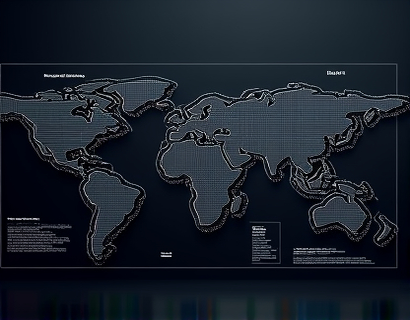Unlocking Insights: Cutting-Edge Software for Graph Theory and Fluid Dynamics Research
In the rapidly evolving fields of graph theory and fluid dynamics, researchers and engineers are constantly seeking advanced tools to unlock deep insights and optimize complex system performance. The integration of cutting-edge software has become pivotal in this journey, offering sophisticated analytical capabilities and enhanced visualization techniques. This article delves into the transformative impact of state-of-the-art software designed specifically for graph theory and fluid dynamics research, highlighting its applications and the profound benefits it brings to the scientific community.
Advanced Analytical Tools for Graph Theory
Graph theory, a branch of mathematics that studies the properties of graphs, has found extensive applications in various domains including computer science, network analysis, and social sciences. Modern software solutions provide powerful analytical tools that enable researchers to model, analyze, and solve complex graph-related problems with unprecedented precision. These tools facilitate the exploration of large-scale networks, enabling the identification of critical nodes, community detection, and the analysis of network robustness and vulnerability.
One of the key features of advanced graph theory software is its ability to handle large datasets efficiently. Utilizing optimized algorithms and parallel processing, these tools can process and analyze vast amounts of data in a fraction of the time compared to traditional methods. This efficiency is crucial for researchers dealing with massive networks, such as social networks, biological networks, or internet infrastructures, where the volume of data can be overwhelming.
Enhanced Visualization Techniques
Visualization plays a critical role in understanding complex graph structures and dynamics. Advanced software offers sophisticated visualization tools that allow researchers to create intuitive and interactive representations of graphs. These visualizations can reveal patterns, trends, and relationships that might not be apparent through numerical data alone. For instance, color-coding nodes based on their properties or using dynamic animations to show the evolution of network structures over time can provide valuable insights.
Interactive visualization tools also enable researchers to perform exploratory data analysis, facilitating hypothesis generation and validation. By manipulating visual parameters and observing the effects on the graph, researchers can gain a deeper understanding of the underlying mechanisms and relationships within the network. This interactive approach is particularly useful in educational settings, where students can engage with complex concepts in a more intuitive manner.
Revolutionizing Fluid Dynamics Research
Fluid dynamics, the study of fluids in motion, is a fundamental area of research with applications ranging from aerospace engineering to environmental science. The complexity of fluid flow phenomena necessitates the use of advanced computational tools to simulate, analyze, and predict fluid behavior accurately. Modern software solutions for fluid dynamics research offer a suite of tools that significantly enhance the capabilities of researchers and engineers.
High-Fidelity Simulations
One of the most significant advancements in fluid dynamics software is the ability to perform high-fidelity simulations. These simulations leverage powerful numerical methods and high-performance computing to model fluid flow with high accuracy. Researchers can simulate a wide range of flow conditions, from laminar to turbulent flows, and study the effects of various parameters such as viscosity, temperature, and pressure.
High-fidelity simulations are essential for designing and optimizing systems in various industries. For example, in aerospace engineering, accurate simulations of airflow around aircraft can lead to more efficient designs, reducing fuel consumption and emissions. In the automotive industry, simulations help in optimizing vehicle aerodynamics, improving performance and safety. These simulations not only save time and resources but also provide insights that are difficult to obtain through experimental methods alone.
Advanced Visualization and Post-Processing
Effective visualization and post-processing are crucial for interpreting the results of fluid dynamics simulations. Advanced software includes powerful visualization tools that transform complex numerical data into intuitive and informative visual representations. Researchers can visualize velocity fields, pressure distributions, and other flow properties using a variety of visualization techniques such as contour plots, streamlines, and vector fields.
Post-processing tools allow researchers to extract meaningful information from simulation data, such as calculating lift and drag forces, identifying flow separation regions, and performing sensitivity analyses. These tools often include automated analysis features that can detect and quantify specific flow phenomena, saving time and reducing the potential for human error. The ability to visualize and analyze data in real-time also facilitates iterative design processes, enabling rapid prototyping and optimization.
Integration and Interdisciplinary Applications
The integration of advanced software for graph theory and fluid dynamics research has opened up new possibilities for interdisciplinary collaboration. Researchers from different fields can leverage these tools to tackle complex, multi-faceted problems that require a combination of network analysis and fluid dynamics insights. For instance, in environmental science, the interaction between network structures (such as river systems) and fluid flow can be studied to better understand and manage natural resources.
In biomedical research, the combination of graph theory and fluid dynamics can lead to breakthroughs in understanding blood flow in vascular networks, which is crucial for diagnosing and treating cardiovascular diseases. The ability to model and simulate these complex systems with high precision and visualize the results in an intuitive manner can significantly advance medical research and clinical practice.
User-Friendly Interfaces and Scalability
To maximize the impact of these advanced software tools, they must be user-friendly and scalable. Modern software solutions are designed with intuitive interfaces that cater to both novice and expert users. Step-by-step guides, interactive tutorials, and comprehensive documentation help users quickly become proficient in using the tools. This accessibility ensures that a broader range of researchers can benefit from these advanced capabilities.
Scalability is another critical aspect, as research projects can vary greatly in scale and complexity. Advanced software is built to handle both small-scale experiments and large-scale simulations, ensuring that researchers can scale their projects seamlessly. Cloud-based solutions and distributed computing frameworks further enhance scalability, allowing researchers to access powerful computational resources on demand.
Future Directions and Innovations
The field of software for graph theory and fluid dynamics research is continually evolving, driven by advancements in computational power, algorithmic innovations, and user needs. Future developments are likely to focus on further improving the efficiency and accuracy of simulations, enhancing visualization capabilities, and expanding the range of applications.
One promising area is the integration of machine learning and artificial intelligence techniques to automate and optimize the analysis process. AI can help in identifying patterns, making predictions, and even suggesting optimal parameters for simulations. This synergy between traditional computational methods and AI has the potential to revolutionize how researchers approach complex problems.
Another area of innovation is the development of multi-physics simulation tools that can simultaneously model multiple physical phenomena, such as fluid flow, heat transfer, and structural mechanics. These tools will enable a more holistic understanding of complex systems, providing a comprehensive view of how different factors interact and influence each other.
Conclusion
The advent of cutting-edge software for graph theory and fluid dynamics research has transformed the way scientists and engineers approach complex problems. These advanced tools offer powerful analytical capabilities, enhanced visualization techniques, and scalable solutions that streamline data analysis and facilitate groundbreaking discoveries. By leveraging these tools, researchers can unlock deep insights, optimize system performance, and push the boundaries of knowledge in their respective fields. As the software continues to evolve, the potential for innovation and impact in graph theory and fluid dynamics research remains vast and exciting.










































